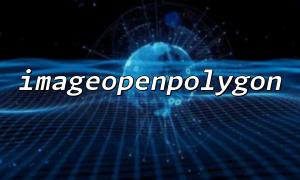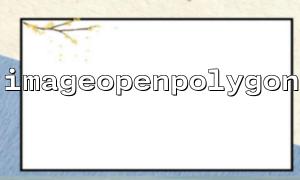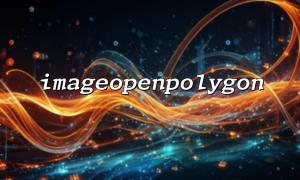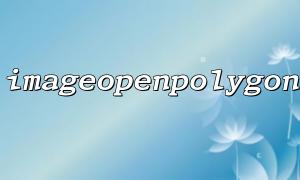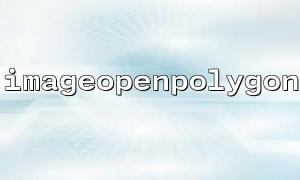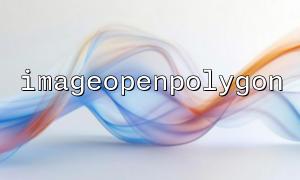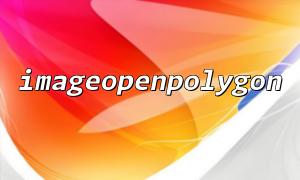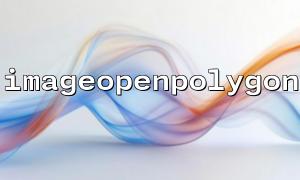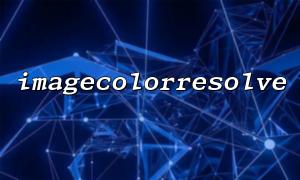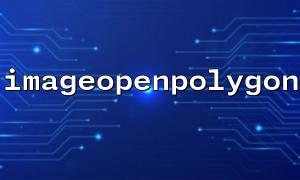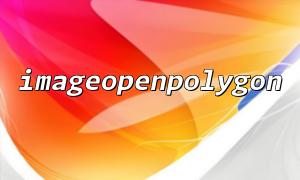在PHP 的GD 圖形處理庫中, imageopenpolygon()是一個非常實用的函數,它允許開發者在圖像資源上繪製一個“開口”的多邊形,也就是說,它不會自動將多邊形的最後一個點與第一個點連接起來。這與imagepolygon()函數(會封閉路徑)不同。接下來,我們就詳細了解一下imageopenpolygon()的參數、用法以及實際應用示例。
bool imageopenpolygon(
GdImage $image,
array $points,
int $num_points,
int $color
)
注意: imageopenpolygon()需要PHP 8.0.0 及以上版本,並且GD 庫支持。
image
類型: GdImage
描述:目標圖像資源,通常由imagecreatetruecolor()或imagecreate()等函數創建。
points
類型: array
描述:一個包含頂點坐標的一維數組,數組中必須以(x, y) 對的順序排列。例如[x1, y1, x2, y2, x3, y3, ...] 。
num_points
類型: int
描述:頂點的數量,而不是數組元素數量(元素數量是頂點數量的兩倍)。
color
類型: int
描述:用來繪製多邊形線條的顏色。通過imagecolorallocate()函數獲取。
下面我們創建一個簡單的PHP 腳本,在一張圖片上繪製一個開口三角形:
<?php
// 創建一個 200x200 的空白畫布
$image = imagecreatetruecolor(200, 200);
// 分配顏色
$white = imagecolorallocate($image, 255, 255, 255);
$blue = imagecolorallocate($image, 0, 0, 255);
// 填充背景為白色
imagefill($image, 0, 0, $white);
// 定義三角形的三個頂點
$points = [
50, 50, // 頂點1 (x1, y1)
150, 50, // 頂點2 (x2, y2)
100, 150 // 頂點3 (x3, y3)
];
// 繪製開口三角形
imageopenpolygon($image, $points, 3, $blue);
// 輸出圖像到瀏覽器
header('Content-Type: image/png');
imagepng($image);
// 銷毀資源
imagedestroy($image);
?>
在瀏覽器中運行上述代碼時,會看到一個藍色的開口三角形,其底邊不會自動封閉。
假設你正在開發一個圖片編輯器,允許用戶手動繪製自定義圖形,而用戶希望繪製“路線”而非“封閉圖形”,這時imageopenpolygon()非常有用。
例如,在一個地圖應用裡,用戶可以繪製一條不封閉的折線路徑來表示路線:
<?php
$image = imagecreatetruecolor(600, 400);
$background = imagecolorallocate($image, 240, 240, 240);
$pathColor = imagecolorallocate($image, 255, 0, 0);
imagefill($image, 0, 0, $background);
// 假設用戶繪製的路徑
$routePoints = [
50, 100,
200, 80,
300, 150,
450, 120
];
// 繪製開口路線
imageopenpolygon($image, $routePoints, 4, $pathColor);
// 保存到服務器
imagepng($image, '/var/www/m66.net/uploads/path_example.png');
// 清理
imagedestroy($image);
echo "路線圖已保存,查看地址:https://m66.net/uploads/path_example.png";
?>
在這個例子中,系統會生成一張帶紅色路線的圖片,並保存在m66.net的服務器目錄下。
點的順序非常重要,錯誤的點順序可能導致意想不到的路徑。
points數組元素數應該是num_points * 2 ,否則可能會拋出警告。
imageopenpolygon()不會自動連接首尾點,如果需要閉合,請使用imagepolygon() 。
imageopenpolygon()適合用來繪製不封閉的多邊形路徑,如路徑規劃、動態軌跡、非閉合圖案等場景。掌握它可以讓你的PHP 圖形處理程序更加靈活多變。
如果你正在開發需要繪圖的Web 應用,別忘了靈活使用它,讓用戶體驗更上一層樓!
